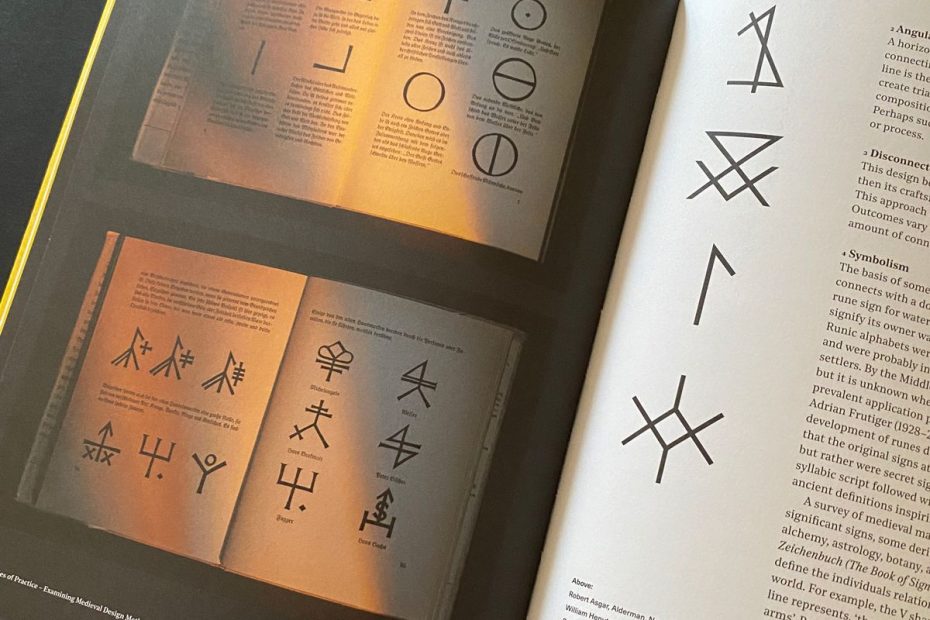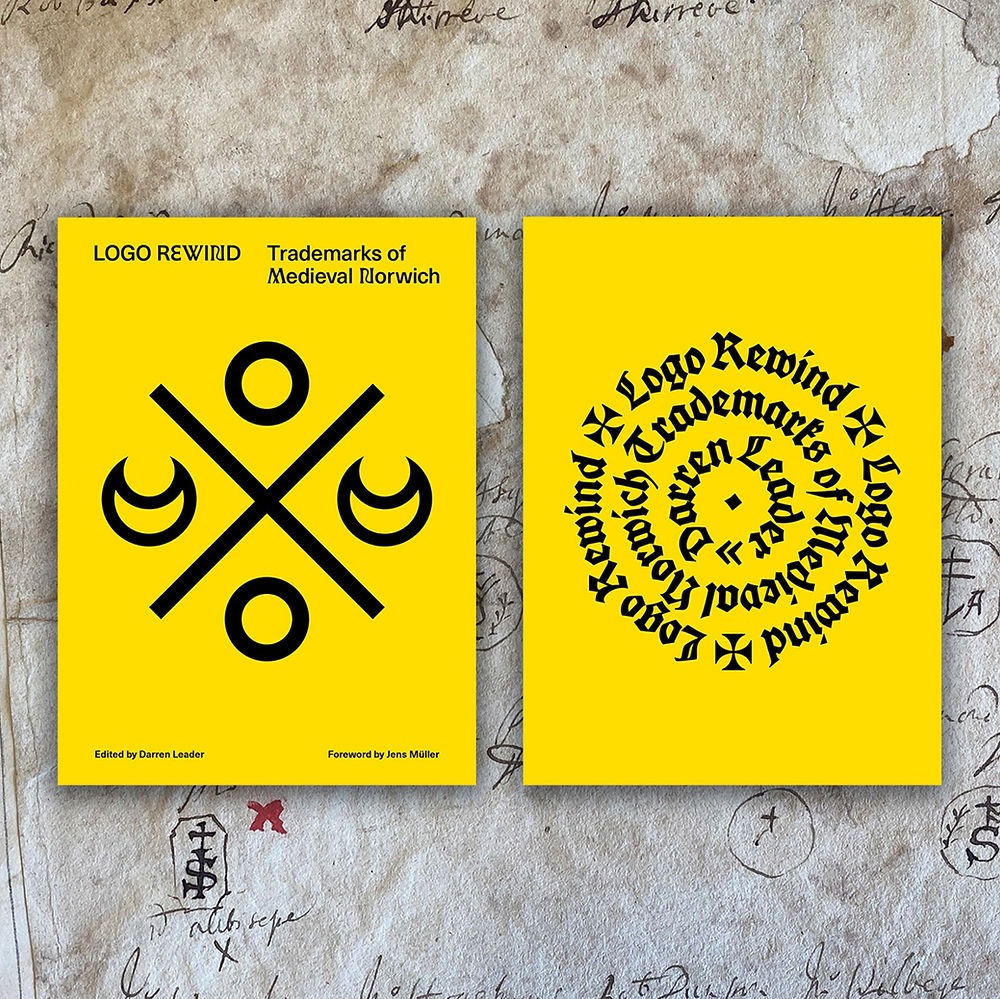
Logo Rewind, by designer Darren Leader, is a book about the visual language of Medieval Norwich, England. It preserves the city’s medieval “logos” and documents the history of Norwich’s past and its impact upon the earliest era of commercial branding.
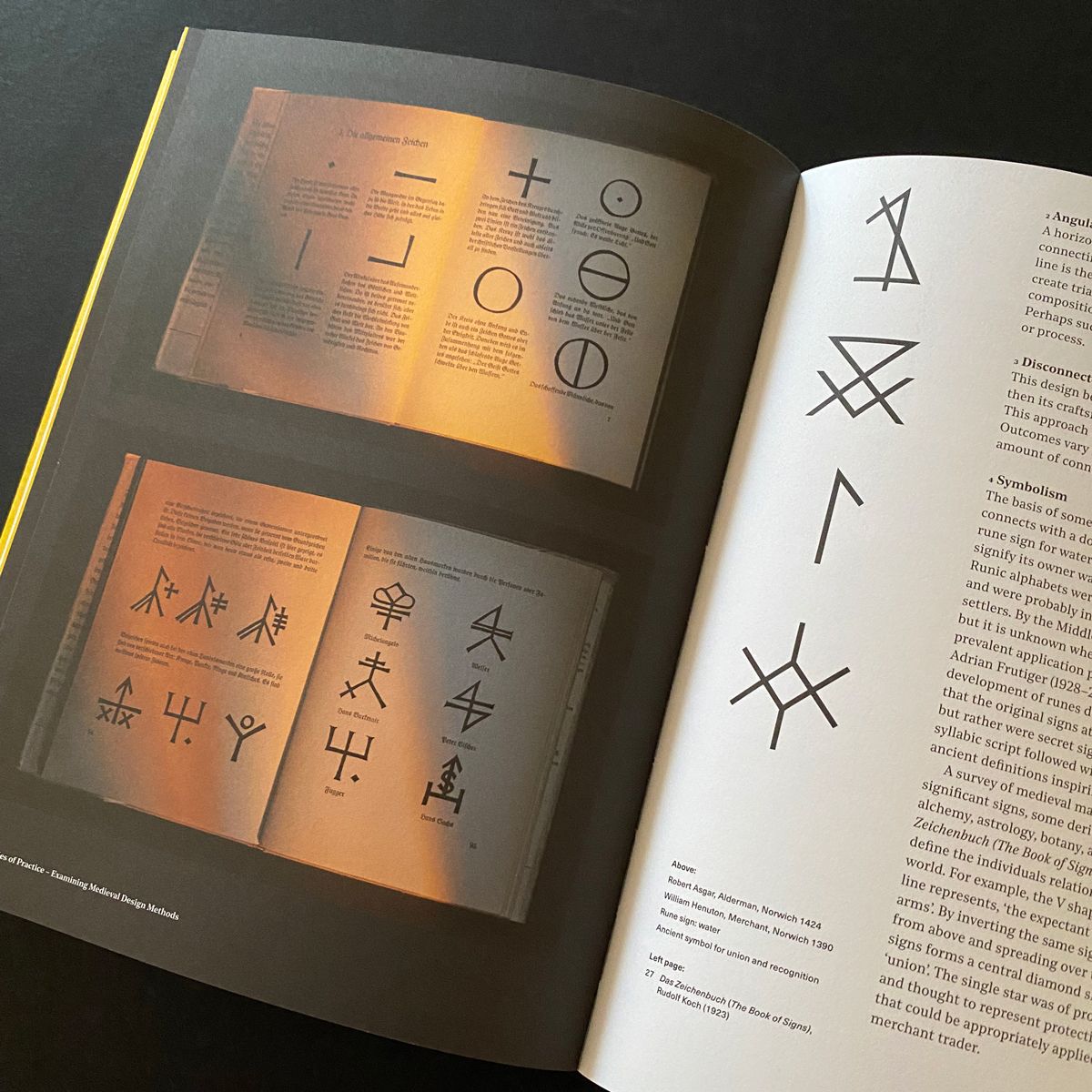
“During the 14th–16th centuries Norwich was a centre of regional and continental trade with products defined by merchants’ marks. These marks were emblems stamped onto goods and carved into the facades, beams and windows of buildings across the city. Each logo had to be different from its competitor and distinguishable by a mostly illiterate population and, as such, are precursors of today’s brand logos.
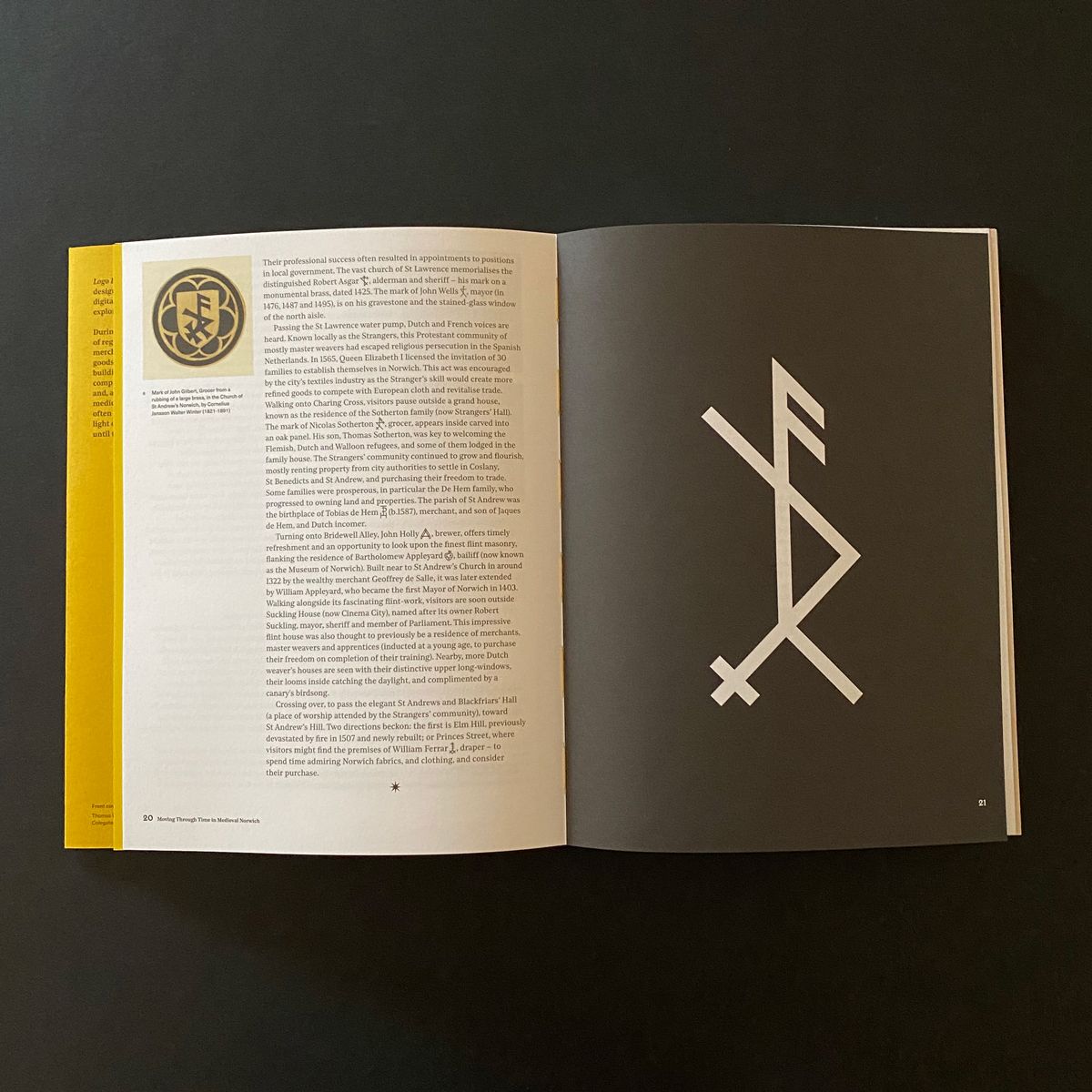
“Norwich’s medieval marks are in fact an early example of commercial branding overlooked by contemporary graphic design. This is a practice previously thought not to have begun in earnest until the late 19th century. They are almost entirely unknown by the public, specifically the national and the international design community, and independent designer, researcher and educator, Darren Leader has collected and digitally remade more than two hundred trademarks from Medieval Norwich, together with added biographic detail recorded in the early 1700s by the antiquarian John Kirkpatrick (1687–1728).
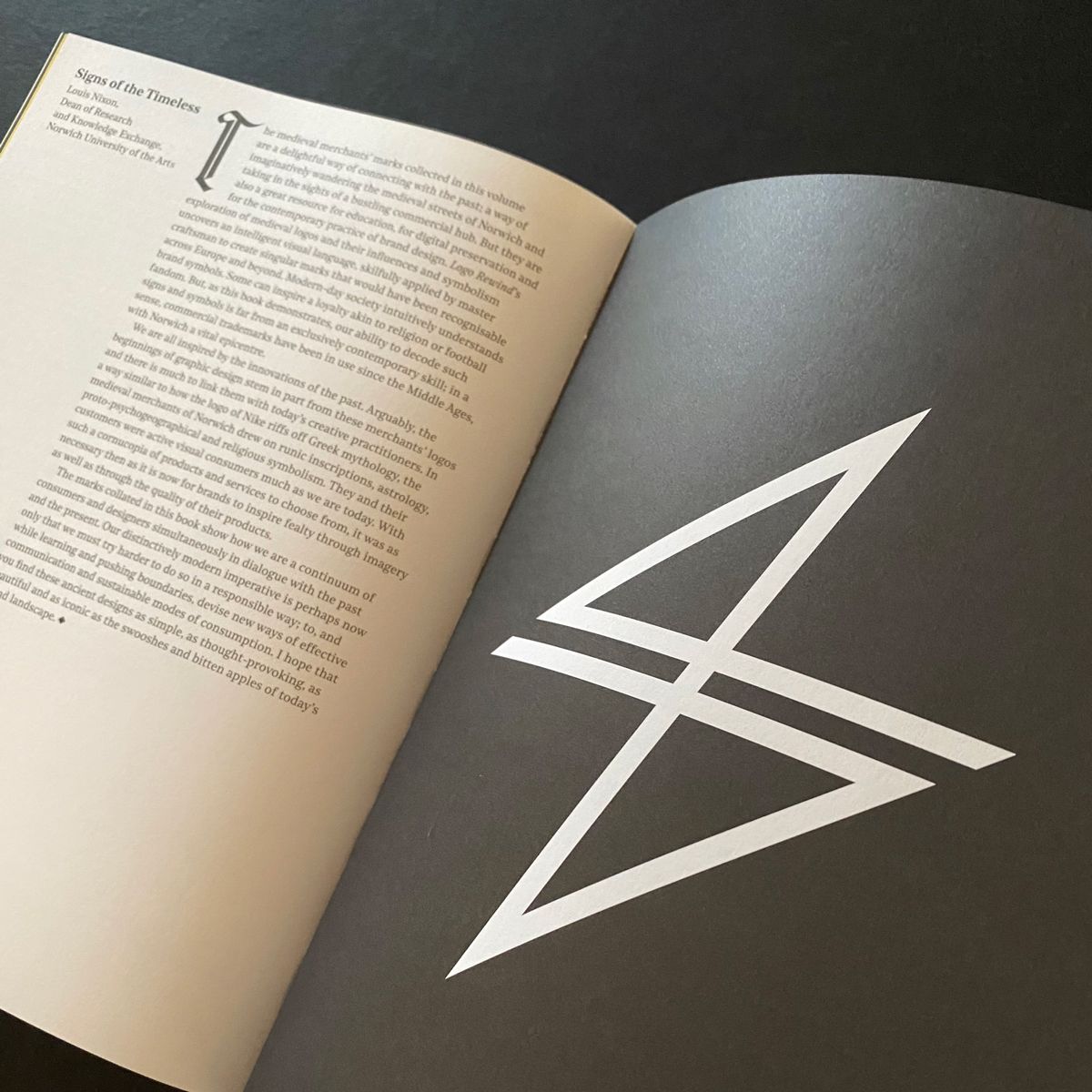
“The marks themselves are strikingly modern in feel, the merchants having crafted a visual language based upon angular lines and geometric shapes reminiscent both of 21st century branding and logo design and the ‘less is more’ aesthetic of modernism, sharing an intention to create captivating brand symbols that communicate with the minimum of elements. Many merchants’ marks are still visible across Norwich today — carved above door frames, engraved in stone, or rendered in stain glass inside churches and on gravestones to indicate the passing of a merchant. This book would provide the perfect guide for, among other things, a personal exploration of the city’s architectural palimpsest.”
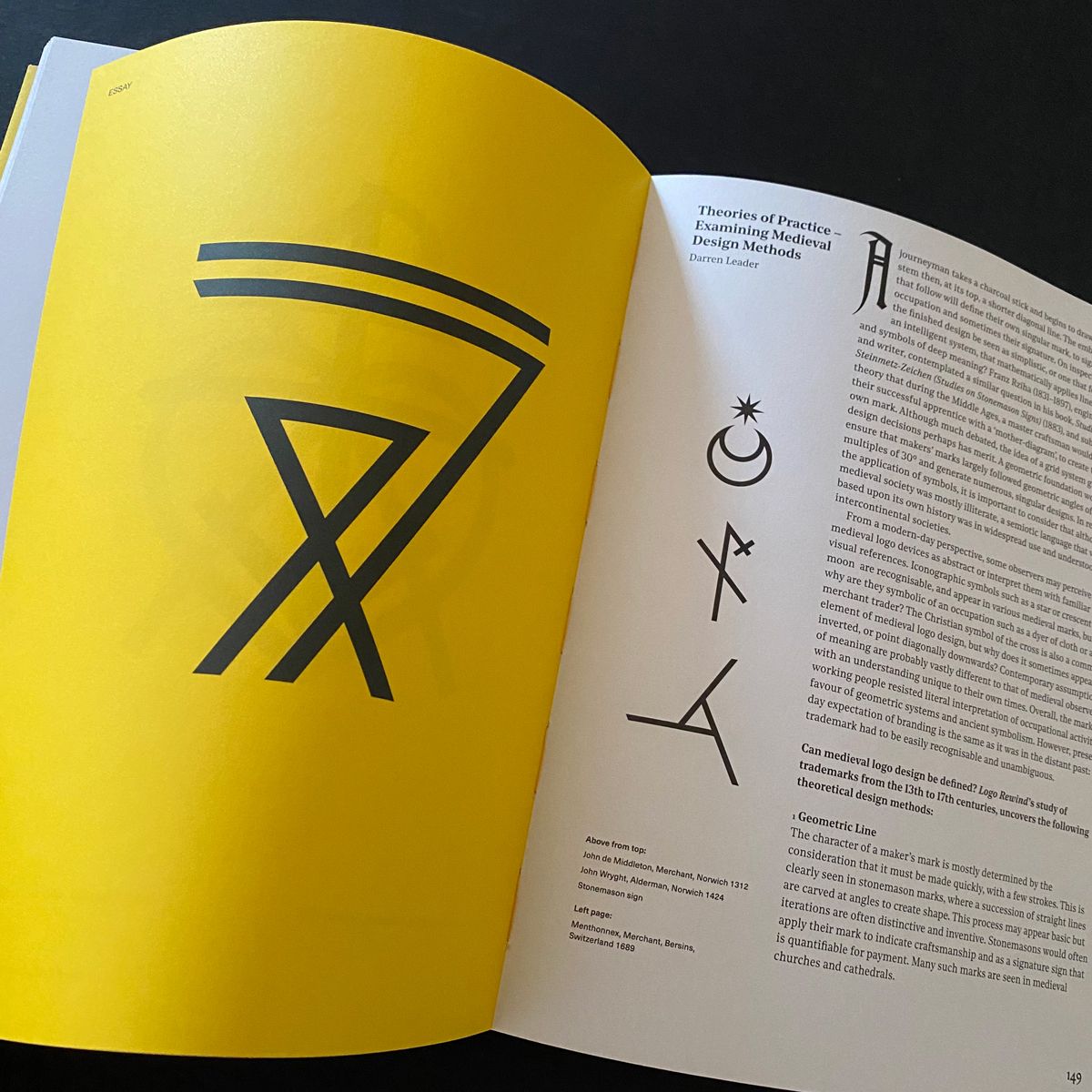
Logo Rewind includes a foreword by Jens Müller and an introduction by Minnie Moll, with essays that explore the histories of logos and merchants’ marks, examples of previous historic preservation, and a new collection of digitally remade marks, annotated with their name, occupation, location, and year of identification.
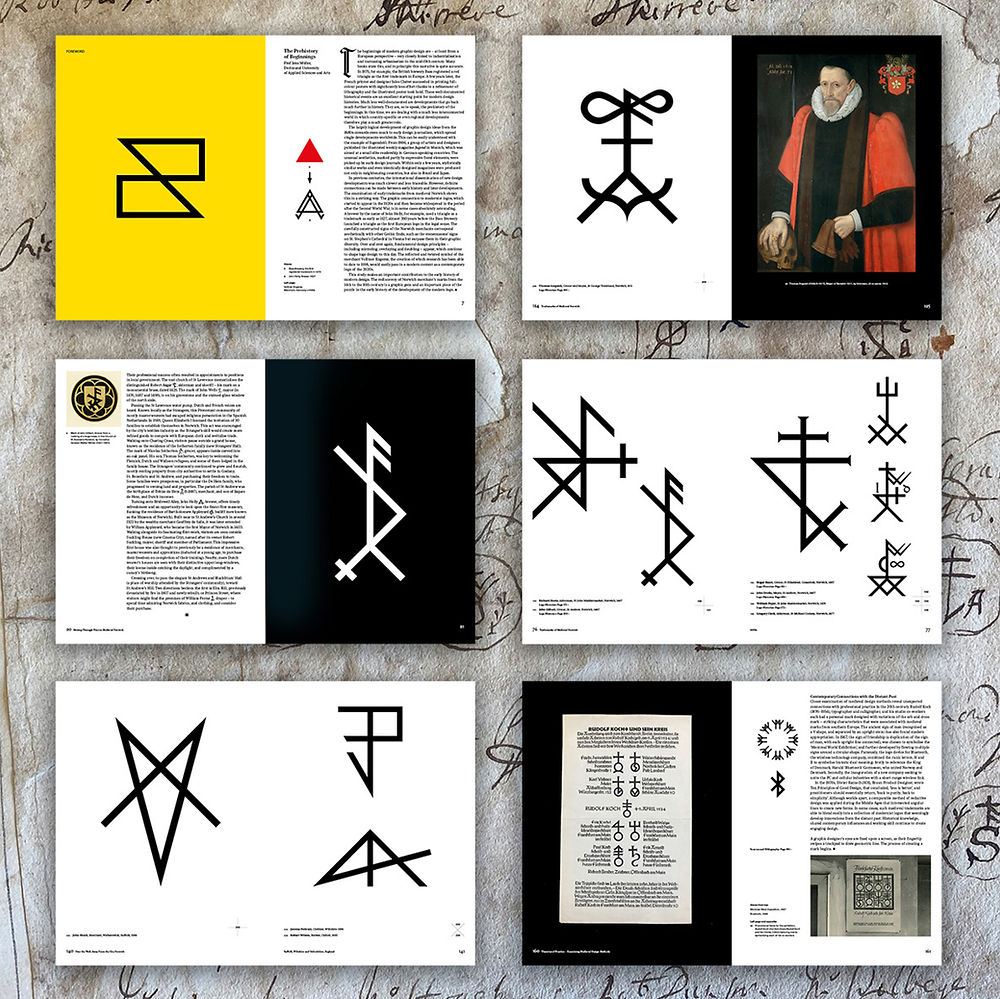
This looks like a lovely piece of design history. I look forward to getting a copy. Currently available for pre-order from UEA Publishing Project.
